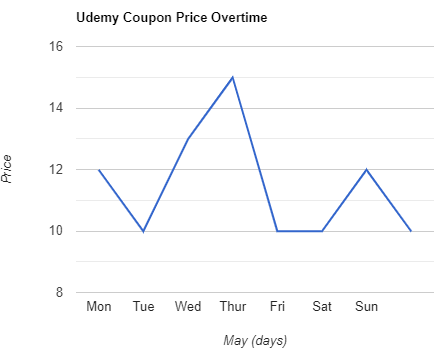Creating Virtual Reality (VR) Apps
Learn the tools and techniques to develop your own professional VR app in Unity 3D.
Created by: Jurgen P. Schulze
Produced in 2017
 Quality Score
Quality Score
Content Quality
/
Video Quality
/
Qualified Instructor
/
Course Pace
/
Course Depth & Coverage
/
Overall Score : 0 / 100
 Live Chat with CourseDuck's Co-Founder for Help
Live Chat with CourseDuck's Co-Founder for Help
Need help deciding on a unity course? Or looking for more detail on Jurgen P. Schulze's Creating Virtual Reality (VR) Apps? Feel free to chat below.
Join CourseDuck's Online Learning Discord Community
 Course Description
Course Description
Build professional VR apps using Unity 3D, a powerful cross-platform 3D engine that provides a user-friendly development environment. In this course, part of the Virtual Reality Professional Certificate program, you will learn how to build a VR engine from the ground up, so you fully understand the entire rendering pipeline from 3D model to pixels in the VR display. We will also cover motion prediction, 3D stereo, lens distortion, time warp and other optimizations for a fluid, realistic VR experience.
You will also learn how to implement the most important VR interaction concepts such as selection, manipulation, travel, wayfinding, menus, and text input in Unity.
Unity is a GUI based programming environment, in which much of the programming can be done through dialog windows. It also supports scripts written in C#, which as we will show will allow for more complex VR functionality.
What you learn about VR programming in this course will help you write VR games, architectural walkthroughs, engineering simulations, 3D data viewers, medical training applications, and many more.
Week 1: VR and Game Engines
Week 2: Physics and Gaze Interaction
Week 3: 3D UI and Locomotion
Week 4: 3D User Interaction
Week 5: Wayfinding and VR Input
Week 6: Testing and Special Topics
You will also learn how to implement the most important VR interaction concepts such as selection, manipulation, travel, wayfinding, menus, and text input in Unity.
Unity is a GUI based programming environment, in which much of the programming can be done through dialog windows. It also supports scripts written in C#, which as we will show will allow for more complex VR functionality.
What you learn about VR programming in this course will help you write VR games, architectural walkthroughs, engineering simulations, 3D data viewers, medical training applications, and many more.
Week 1: VR and Game Engines
Week 2: Physics and Gaze Interaction
Week 3: 3D UI and Locomotion
Week 4: 3D User Interaction
Week 5: Wayfinding and VR Input
Week 6: Testing and Special Topics
 Instructor Details
Instructor Details

- 0.0 Rating
 0 Reviews
0 Reviews
Jurgen P. Schulze
Jurgen teaches computer graphics and virtual reality at UC San Diego. His research interests include applications for virtual and augmented reality systems, 3D human-computer interaction, and medical data visualization. He holds an M.S. degree from the University of Massachusetts and a Ph.D. from the University of Stuttgart, Germany. He spent two years as a post-doctoral researcher in the Computer Science Department at Brown University.





